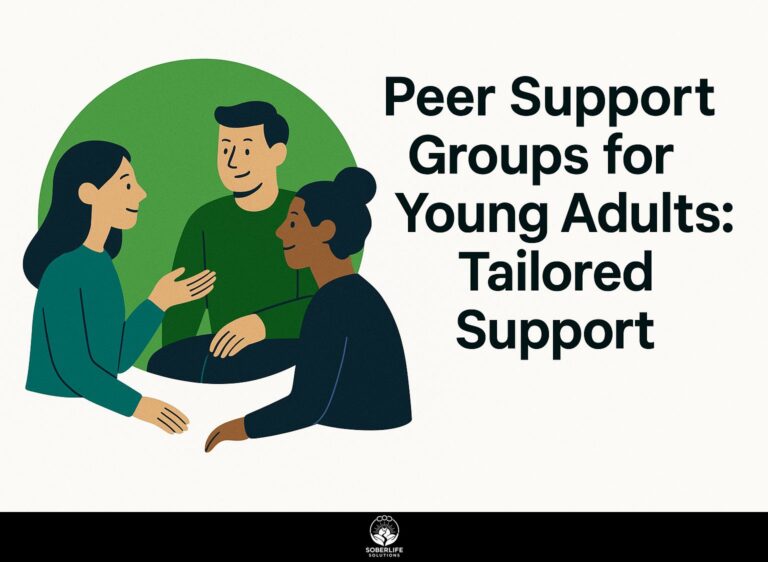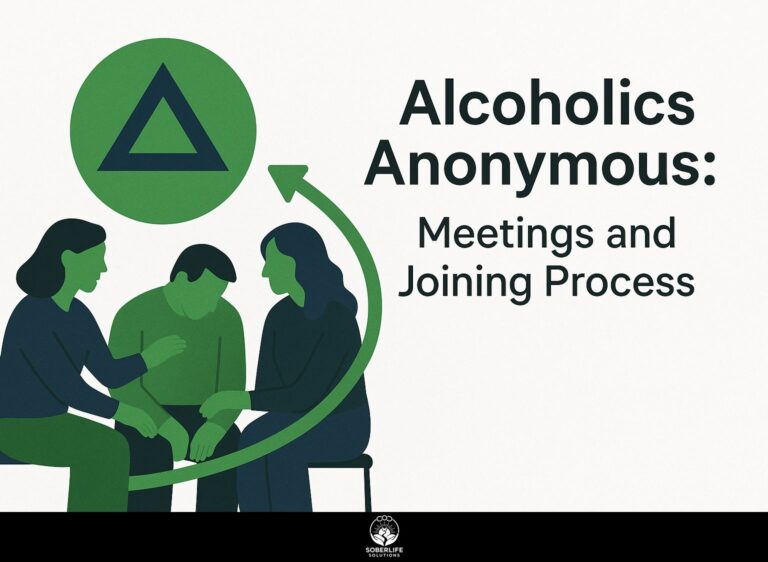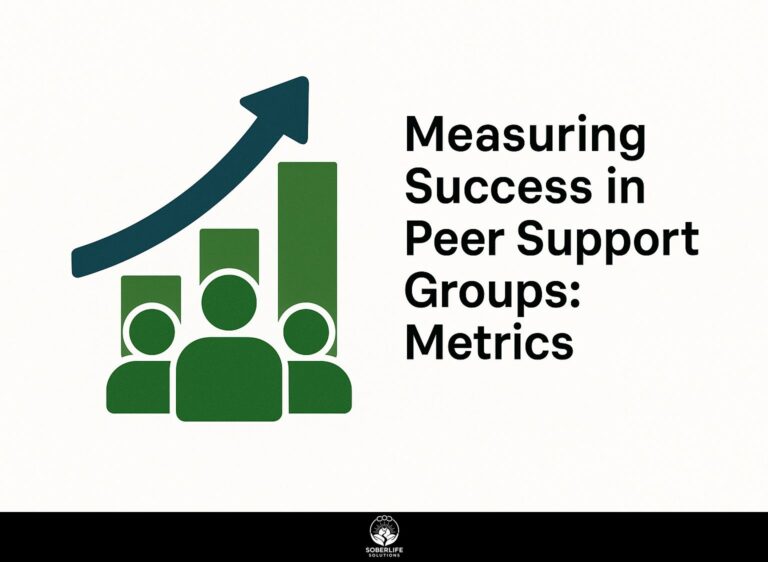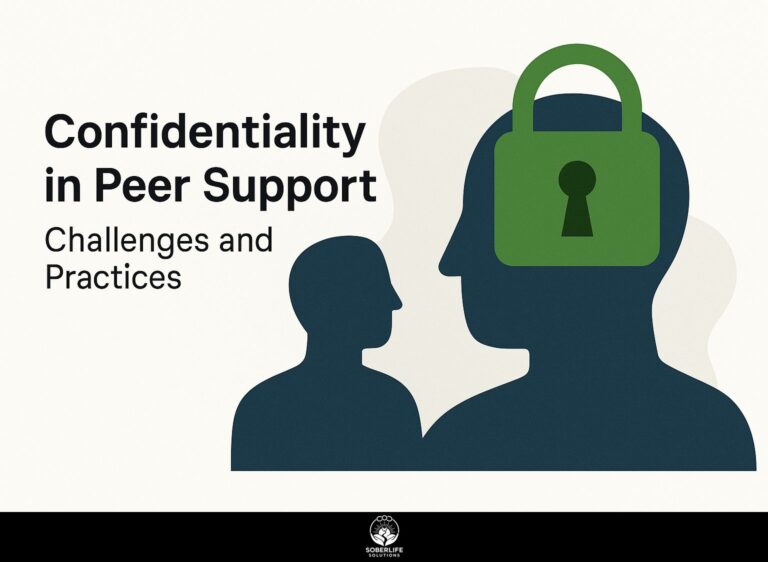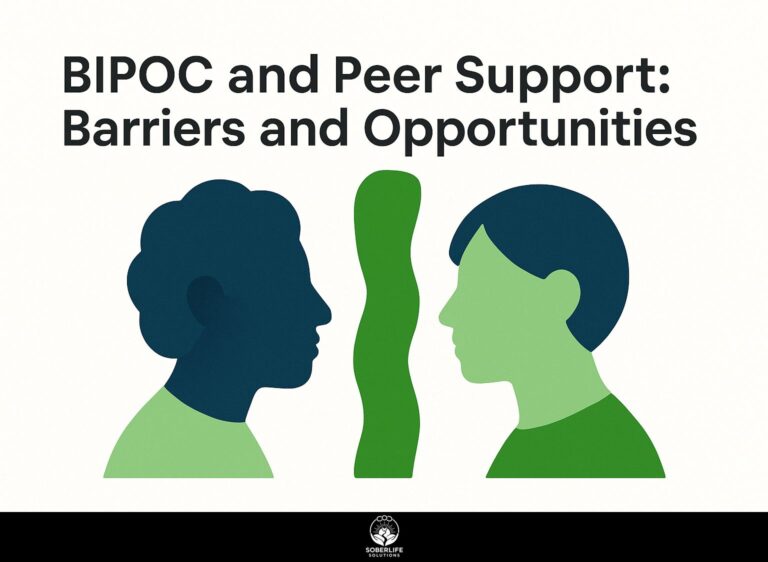Virtual Peer Support: Digital Platforms and Apps
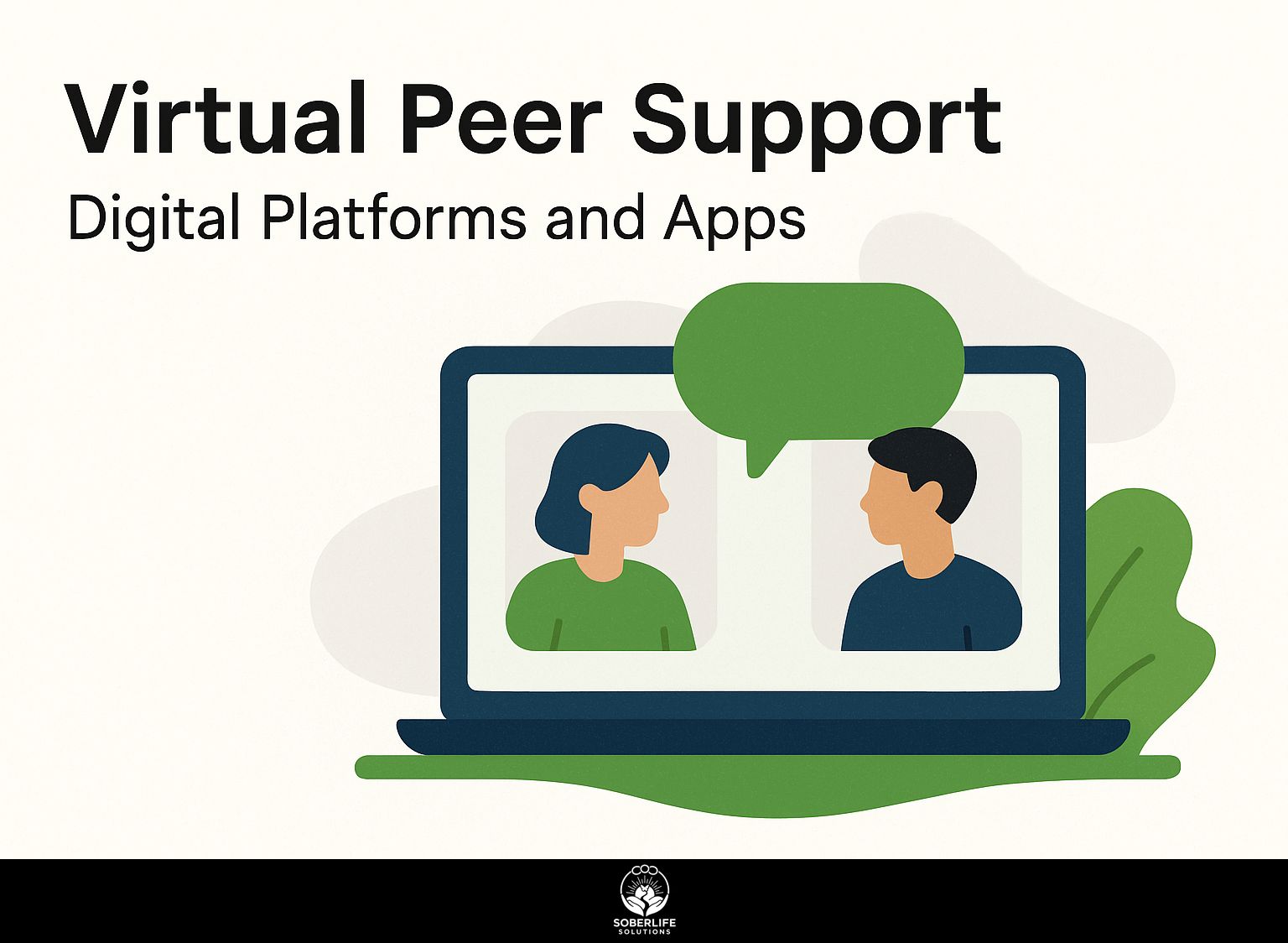
Introduction to Virtual Peer Support
**Virtual peer support** is changing how we approach **mental health** care. Using different types of technology, online support platforms and apps link people with trained **peer support specialists** worldwide. This article looks at how these new tools improve accessibility, build community, and tackle issues in traditional support systems, offering useful information for anyone working on their mental health.
Key Takeaways:
Definition and Importance
Virtual peer support means online interactions where people give each other emotional and psychological help, often leading to better health.
This support can significantly impact mental health; studies have shown that 72% of participants report increased self-efficacy after engaging in virtual peer support groups.
Platforms like Facebook Groups and Reddit allow users to connect over shared experiences, providing a sense of community. Apps like 7 Cups offer live chat support with trained listeners, making it simpler to get mental health assistance. Insights from Cambridge Journal suggest that peer-to-peer support is an evolving aspect of mental health care, particularly when facilitated through social media (The future of mental health care).
By joining these groups, people can share methods for managing stress and receive support, which helps to strengthen and improve emotional well-being.
Historical Context
The evolution of virtual peer support dates back to the early 2000s with the rise of online forums and social media platforms dedicated to mental health discussions.
In 2010, platforms like CommonGround appeared, letting people connect through similar life events, marking an important change in how peer support was structured.
In 2015, PeerTECH started using a well-organized method that mixed technology with mental health services to improve communication between peers. These tools support live communication and offer resources customized for users.
Since 2020, different mobile apps have made it easier for users to get support, showing the ongoing growth and changes in virtual peer support systems. According to evaluation by MDPI, digital mental health platforms have greatly expanded access to innovative support methods, enhancing user engagement and care quality.
Types of Digital Platforms
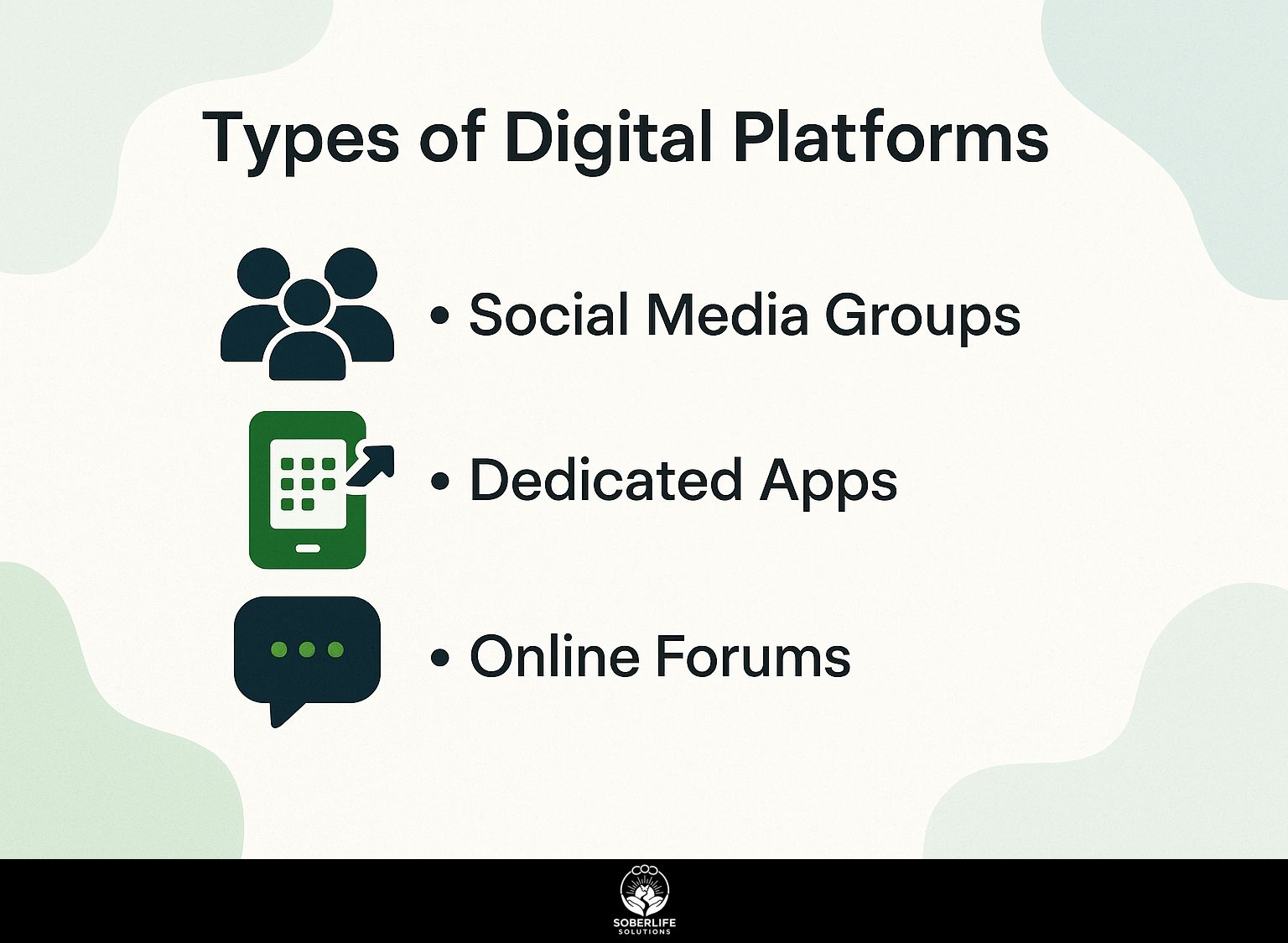
Multiple websites offer options for people to help one another, each with unique functions to suit different user choices and requirements. For those interested in how these platforms support community well-being, you might appreciate our deep dive into the benefits and activities of peer support groups.
Social Media Groups
Groups on social media platforms such as Facebook are widely used by people looking for support from peers and to share their experiences. Social media even plays a significant role in addiction, as discussed in [this insightful exploration](https://soberlifesolutions.com/social-medias-role-in-addiction/).
These groups offer an easy way to share tips and resources, helping members feel part of a community. For example, groups focused on mental health or parenting allow users to connect with others facing similar challenges.
A significant downside is the potential spread of misinformation. Users may encounter unverified advice or harmful suggestions that could exacerbate their situations. According to Khoros, employing best practices for online community moderation can help mitigate such risks.
To reduce this risk, check facts with reliable sources or talk to experts before deciding based on group talks.
Dedicated Apps
Apps such as ShareWell and PeerTECH offer organized spaces for people to link up and discuss their experiences with mental health.
These platforms provide journaling tools, mood tracking, and community forums, forming a strong support network.
For instance, ShareWell allows users to set personal goals and track their progress, while PeerTECH emphasizes real-time conversation facilitation, connecting users with similar experiences.
Both apps prioritize user privacy, ensuring a safe space for sharing. Using these tools helps users track their mental health progress and get feedback and support from other users, which greatly improves their feeling of connection.
Online Forums
Traditional online forums remain a staple for virtual peer support, providing spaces for anonymity and chronicling personal narratives.
These platforms encourage more meaningful discussions by letting users share their experiences without worrying about being judged. For example, forums like Reddit or specialized communities can host threads dedicated to topics such as mental health, addiction recovery, or parenting challenges.
Challenges like effective moderation are essential; without it, forums can devolve into negativity or misinformation. User privacy concerns must be addressed, especially with personal disclosures.
Setting clear rules and using moderation tools like AutoModerator on Reddit creates a safe and supportive space.
Benefits of Virtual Peer Support
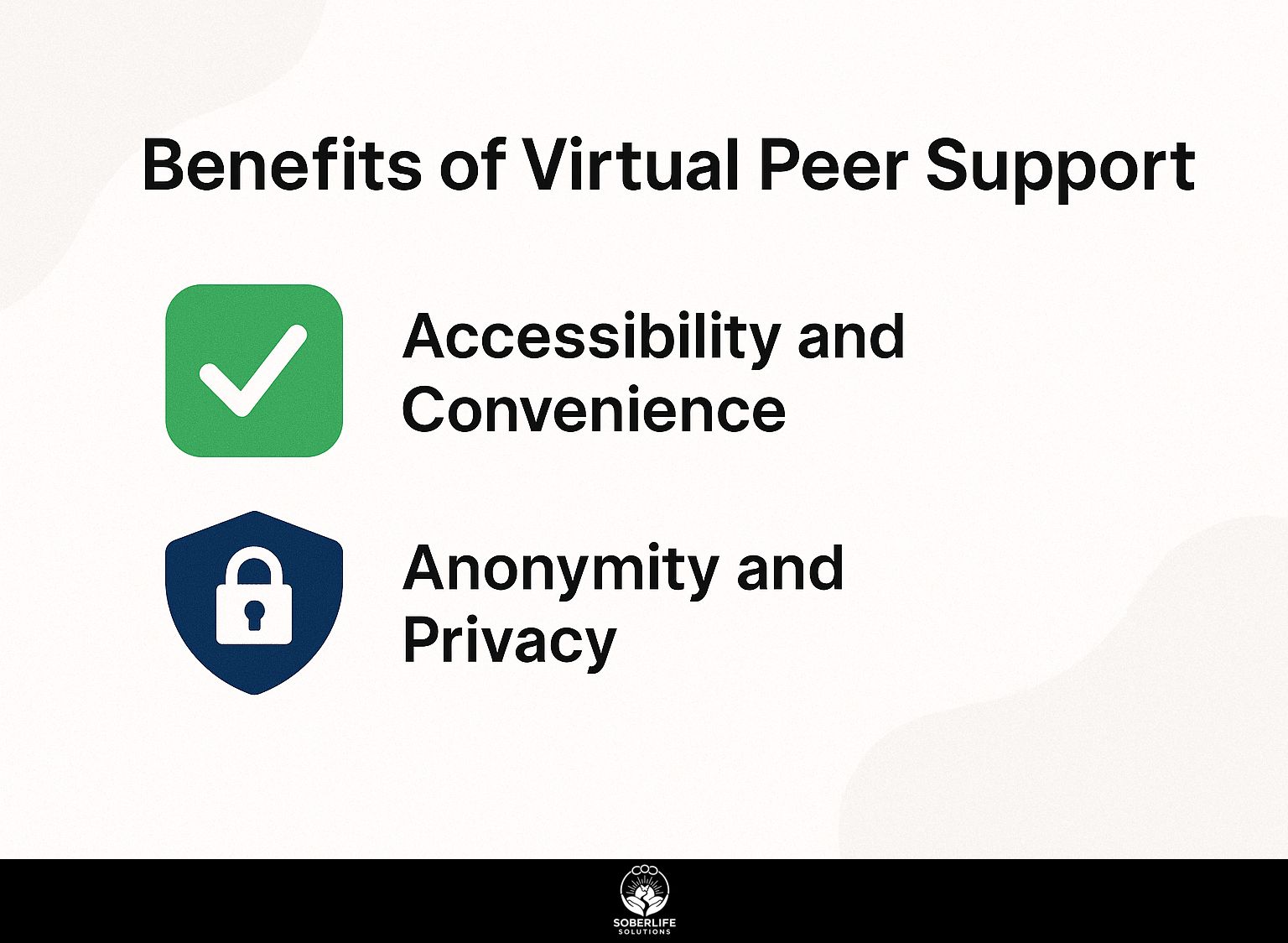
Virtual peer support offers great benefits, especially in terms of being easy to access and convenient for people dealing with mental health issues. As virtual recovery groups continue to trend, they provide a supportive and accessible environment for individuals seeking to overcome challenges.
To delve deeper into how these groups are developing, learn more about the current trends shaping virtual recovery.
Accessibility and Convenience
A key benefit of virtual peer support is its ease of access, allowing people to connect from any location at any time, overcoming distance limitations.
This accessibility is particularly beneficial for marginalized groups who may face stigma or discrimination in traditional support settings.
Platforms like Zoom and Discord facilitate anonymity, allowing users to engage without revealing their identities. Facebook Groups or specialized forums provide space where individuals can share experiences and resources without geographic limitations.
These tools encourage people who may be hesitant to attend in-person meetings, providing an environment where everyone can participate.
Anonymity and Privacy
The privacy of online platforms can make users feel more at ease when sharing personal experiences and looking for help.
It is important for platforms to protect user privacy and follow moral principles. Implementing encryption for sensitive communications is essential; tools like Signal can be employed for secure messaging.
Follow HIPAA rules when dealing with personal health information. This can involve regular training sessions on privacy for peer support facilitators.
Establish clear guidelines about data sharing and confidentiality, creating a trustworthy environment where users feel protected while connecting with others.
Challenges and Limitations
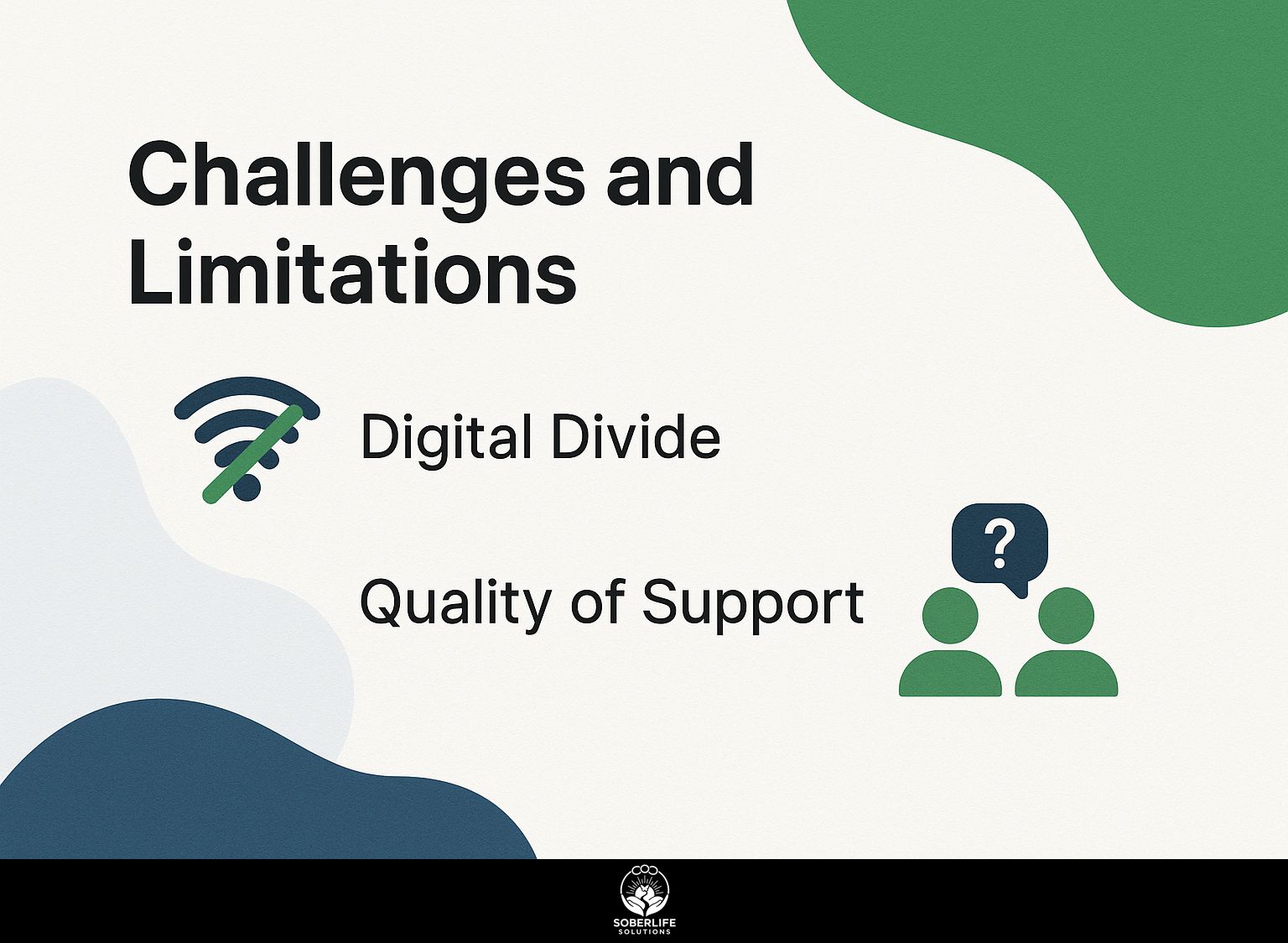
Although virtual peer support has advantages, it also encounters obstacles that can limit how well it works and how many people it can help. To understand how these challenges can be managed, consider the role of various therapies for recovery, which provide valuable insights into effective support mechanisms.
Digital Divide
The digital divide remains a significant barrier, limiting access to online peer support for many individuals, particularly in underserved communities.
Efforts to close this gap should include local digital education programs, which can give people the skills needed to use online platforms.
For example, local libraries or schools could host workshops that teach basic computer skills and offer training on using peer support platforms like Zoom or Slack.
Setting up mobile hotspots in low-income areas would improve internet access, letting more people join online peer support groups.
Working with groups that focus on sharing technology can help provide devices to those who need them for involvement.
Quality of Support
The quality of support provided in virtual environments can vary widely, raising concerns about the reliability of information and emotional guidance.
Different elements greatly affect how successful virtual peer support is.
The qualifications of participants matter. People who have experience or a professional background can give better advice. For example, a mental health expert will probably offer more trustworthy information than a user who shares personal stories.
Moderation is important for keeping quality high. Engaged moderators can help manage conversations, maintain polite interactions, and check the correctness of information shared.
Platforms like Discord or specialized forums often employ trained moderators for this reason, enhancing the overall support environment.
Best Practices for Engagement
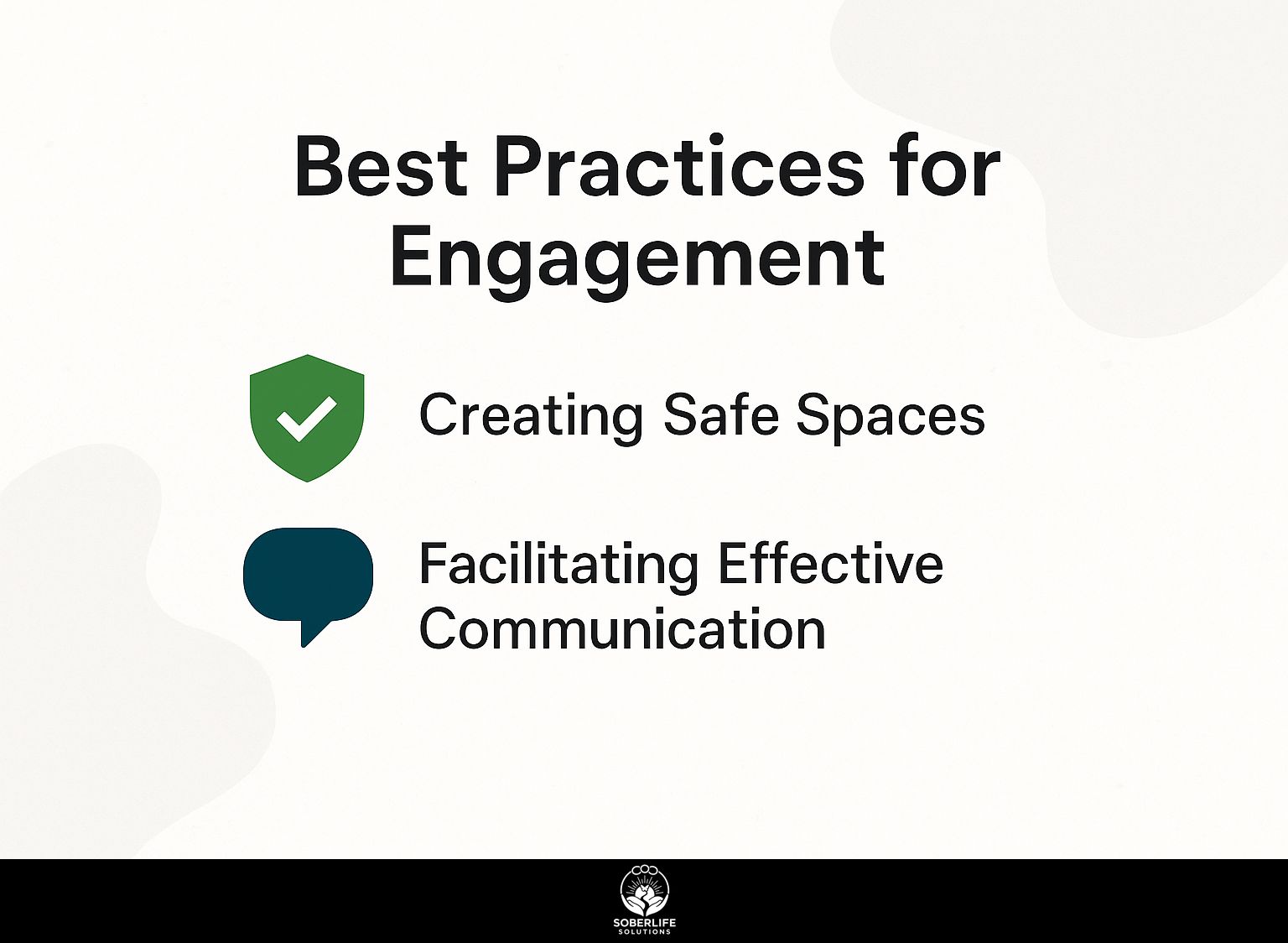
Using best methods can greatly improve the success of virtual peer support programs and user happiness.
Creating Safe Spaces
Creating a safe environment is key for peer support to work well, as it helps participants talk openly and build trust.
To create this environment, set clear rules for behavior, such as encouraging respect, paying attention, and keeping things private.
Encourage participants to communicate openly while being mindful of their language. Set up a strong system for reporting and handling bad behavior. For example, provide a dedicated email or an anonymous digital feedback form where participants can report concerns without fear.
Check these guidelines often to match your group’s needs, ensuring everyone feels valued and heard.
Facilitating Effective Communication
Helping peer support participants communicate well is important for building strong connections.
Active listening is important for recognizing and confirming how participants feel.
Encourage the use of technology tools such as Zoom or Microsoft Teams, which offer features like breakout rooms for intimate discussions and chat functionalities for real-time engagement.
Using platforms like Miro or Padlet can help show ideas and improve communication. Start by establishing ground rules for respectful dialogue and set aside time for open reflection.
This approach makes sure everyone feels heard and valued, which brings people closer together.
Future Trends in Virtual Peer Support
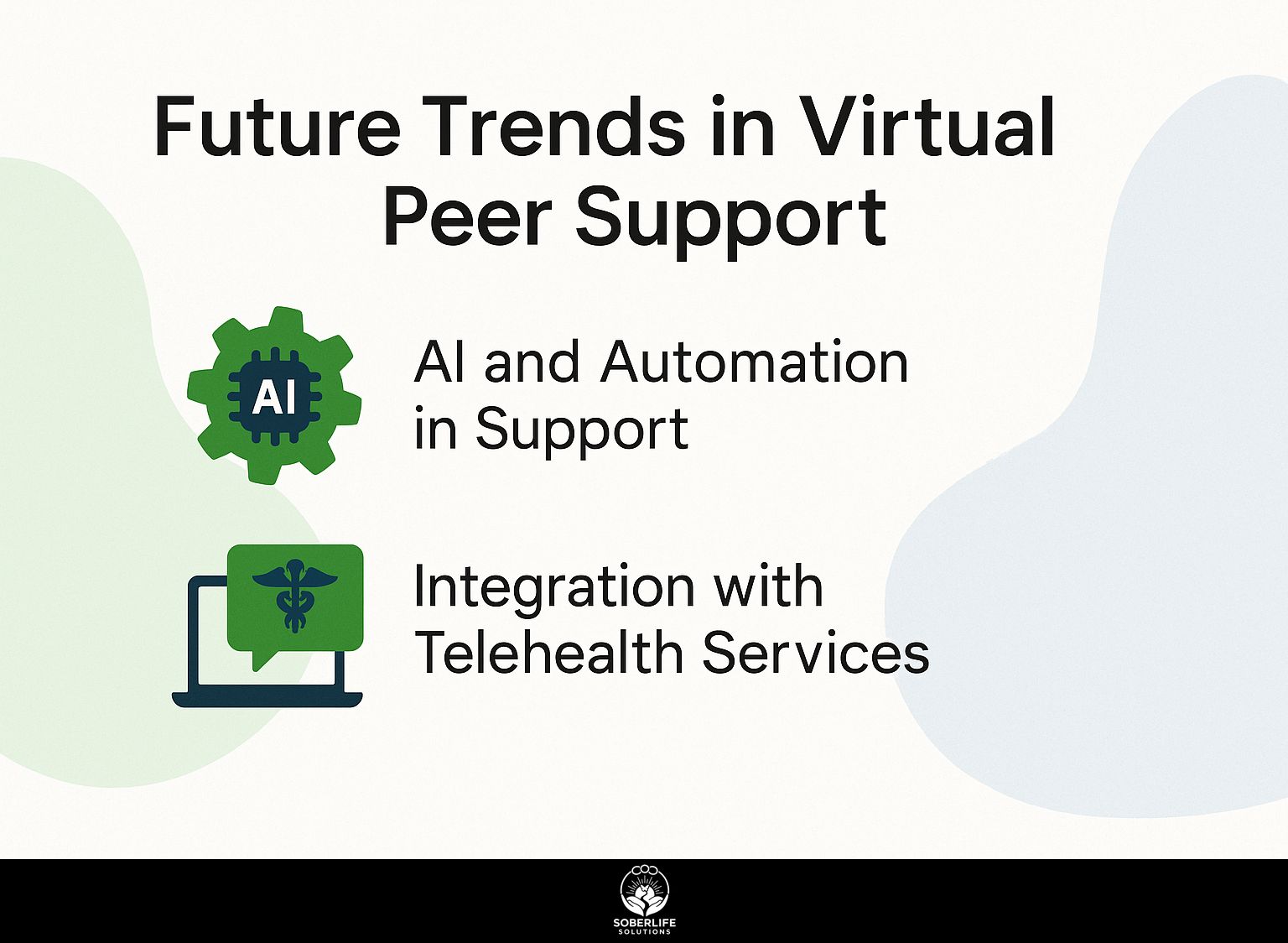
The way virtual peer support works will change a lot with the improvements in AI and telehealth services. As these technologies evolve, participating in virtual recovery groups trending becomes an increasingly accessible and effective option for many individuals seeking support.
AI and Automation in Support
AI tools like chatbots are improving online peer support by offering instant help and information.
These chatbots can triage requests, connecting users to appropriate human peers or providing self-help resources instantly. For instance, platforms such as Woebot use AI to provide cognitive behavioral therapy methods that can help reduce anxiety.
While these tools improve accessibility, ethical considerations arise-particularly around data privacy and the potential for misinterpretation. Implementing transparent policies and training data on diverse experiences will help mitigate biases, ensuring that AI complements human empathy rather than replacing it.
Integration with Telehealth Services
Including virtual peer support in telehealth services is creating better mental health care.
These two models increase user interaction and create a feeling of community.
For instance, platforms like `Talkspace’ and `BetterHelp’ offer therapists the option to facilitate group sessions, allowing patients to connect over shared experiences.
Apps like ‘Peer Support Chat’ use text-based support, allowing users to talk with others in a secure setting.
Using tools like ‘Zoom’ or ‘Microsoft Teams’ for live sessions can create a classroom-like environment, which improves communication and results.
A detailed strategy is important for an effective mental health system.
Frequently Asked Questions
What is virtual peer support?
Virtual peer support is a form of support where individuals connect and communicate with one another through digital platforms and apps.
What are digital platforms and apps used for virtual peer support?
Digital platforms and apps used for virtual peer support include social media platforms, online support groups, and mental health apps.
How does virtual peer support work?
Virtual peer support works by creating a space for individuals to share their experiences and support each other in a safe and confidential environment through online communication.
Why is virtual peer support beneficial?
Virtual peer support can be beneficial for individuals who may not have access to traditional in-person support, as it allows for a sense of community and connection with others who may be going through similar experiences.
Are there any drawbacks to virtual peer support?
Some potential drawbacks to virtual peer support may include the lack of face-to-face interaction and potential challenges with establishing trust and maintaining confidentiality in an online setting.
How can I get involved in virtual peer support?
You can participate in online peer support by joining online support groups or using mental health apps. You can also start your own online community to connect with others who may find peer support helpful.

